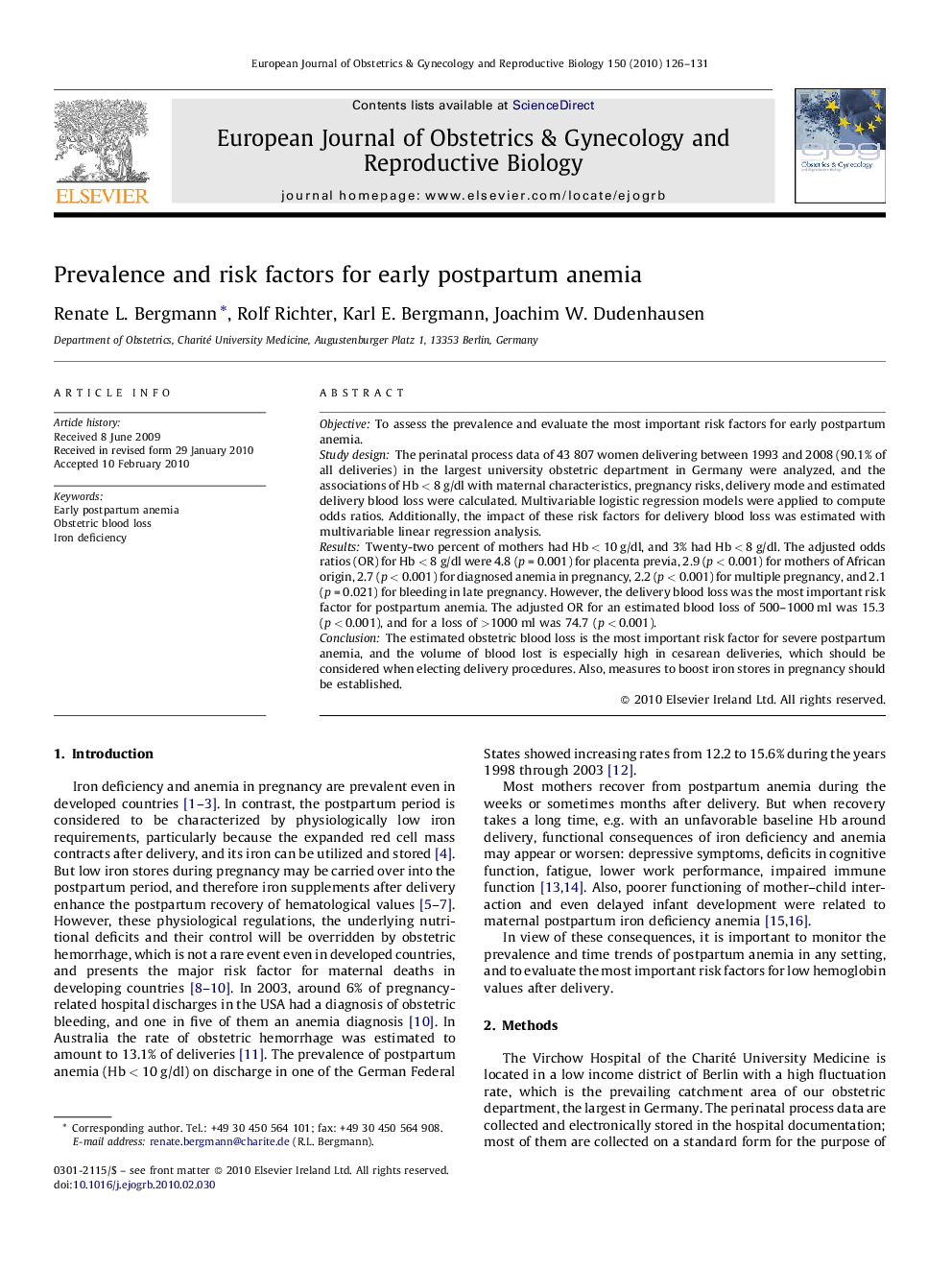| Article ID | Journal | Published Year | Pages | File Type |
|---|---|---|---|---|
| 3920910 | European Journal of Obstetrics & Gynecology and Reproductive Biology | 2010 | 6 Pages |
ObjectiveTo assess the prevalence and evaluate the most important risk factors for early postpartum anemia.Study designThe perinatal process data of 43 807 women delivering between 1993 and 2008 (90.1% of all deliveries) in the largest university obstetric department in Germany were analyzed, and the associations of Hb < 8 g/dl with maternal characteristics, pregnancy risks, delivery mode and estimated delivery blood loss were calculated. Multivariable logistic regression models were applied to compute odds ratios. Additionally, the impact of these risk factors for delivery blood loss was estimated with multivariable linear regression analysis.ResultsTwenty-two percent of mothers had Hb < 10 g/dl, and 3% had Hb < 8 g/dl. The adjusted odds ratios (OR) for Hb < 8 g/dl were 4.8 (p = 0.001) for placenta previa, 2.9 (p < 0.001) for mothers of African origin, 2.7 (p < 0.001) for diagnosed anemia in pregnancy, 2.2 (p < 0.001) for multiple pregnancy, and 2.1 (p = 0.021) for bleeding in late pregnancy. However, the delivery blood loss was the most important risk factor for postpartum anemia. The adjusted OR for an estimated blood loss of 500–1000 ml was 15.3 (p < 0.001), and for a loss of >1000 ml was 74.7 (p < 0.001).ConclusionThe estimated obstetric blood loss is the most important risk factor for severe postpartum anemia, and the volume of blood lost is especially high in cesarean deliveries, which should be considered when electing delivery procedures. Also, measures to boost iron stores in pregnancy should be established.
